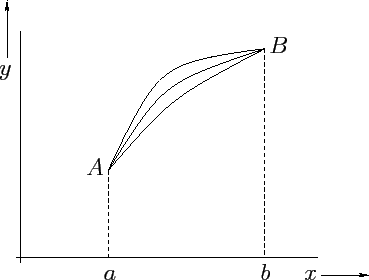Calculus of Variations

It's hard to explain the technicalities of the calculus of variations to a non-mathematician. Still, an overview of the subject is accessible to most people.
Traditionally, a story is used to introduce the subject to lay folk. Queen Dido was promised as much land as the boundary of a bull hide could contain. She cut the hide into many thin strips and combined them into one long strip. She used this long strip to acquire the biggest territory possible. History does not record the shape she made with the hide. If she was a good mathematician, she used a circle. Many surfaces can be bounded by a curve of given length, and the circle is the one of largest area. The branch of mathematics that proves this statement is the calculus of variations.
Newton published an important result in the calculus of variations. If a body moves through the air, it faces resistance determined by the shape of the body. Newton's problem was this: What body shape encounters least resistance? Newton correctly solved the problem for one special case, determining that the surface of a solid is obtained by revolving a curve around its axis. Yet Newton did not offer a proof of his calculations, so his result had only a small effect on the development of mathematics.
A problem was formulated and studied by the brothers Bernoulli in the seventeenth century. If a small body moves under the influence of gravity along a given curve from one point to another, then the time required depends on the shape of the curve. Their problem was: Which path is shortest? The solution is a curve known as cycloid.
What is common to these problems is their max-min character. Problems involving maxima and minima occur in calculus, which is often taught in high school or undergraduate studies. More complex problems about functions of curves and surfaces do not arise in these courses.
One very famous problem concerning surfaces is the problem of Plateau: If a closed curve in three-dimensional space is given, we can span into it many different surfaces, all of them bounded by the given curve. Which of all these areas has the least area?
Nature often minimizes certain magnitudes. The soap bubble is, for example, a minimal surface. Light always follows the shortest path. Mechanical movement minimizes effort. General relativity has a minimizing principle: light rays and bodies (upon which no force acts) move along shortest paths. Etc.